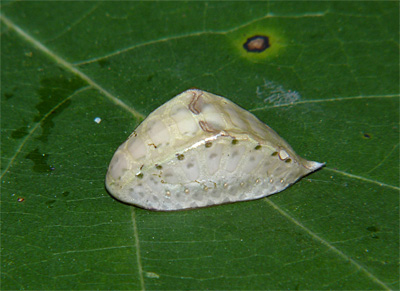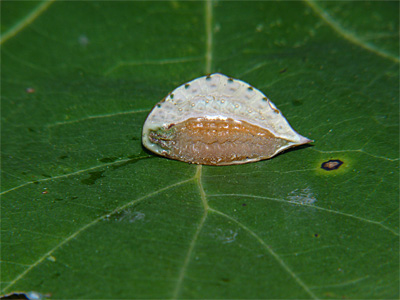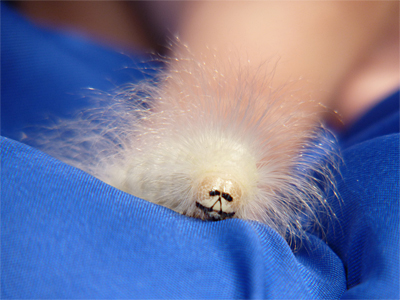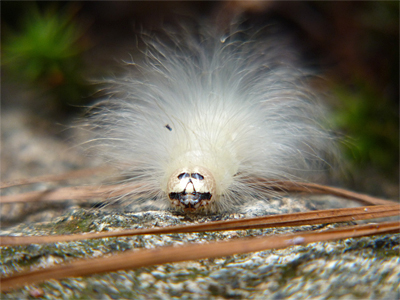Near the end of the day on October 8, I received a call on my radio from Ranger Gurlal saying that he had found something interesting in Catch the Wind. He didn’t say what it was, only that he wanted me to see it. Several minutes later as Gurlal rounded the bend in the trail, I could see that he had a folded leaf in his hands; there had to be some kind of insect within.
As I unfolded the leaf, a bizarre looking creature appeared. It looked to be a slug caterpillar. I later discovered that it was the larva of a Skiff Moth (Prolimacodes badia), and indeed, a slug caterpillar.

Slug caterpillars are small (under 3 cm), the Skiff Moth caterpillar being about 1.5 cm in length. Unlike most caterpillars, slug caterpillars glide along on tiny suckers on their undersides, instead of feet.

The adult of this particular slug caterpillar is an attractive brown-hued moth.
A little over a week later, on October 16th, a call on the radio alerted me to yet another somewhat strange caterpillar. This one was picked up by a young, sharp-eyed Museum Guest near the head of the Dinosaur Trail. And again, I couldn’t put a name on the larva, but the face looked familiar.

This caterpillar, I later discovered, is called The Laugher (Charadra deridens). Oddly, the name comes from the wings of the adult (which is a bit of a stretch, if you ask me) rather than the facial markings on the caterpillar.

Eventually, the caterpillar’s entire head will become black leaving only three small whitish spots on the face; the frontal triangle, and one spot on either side of the triangle.